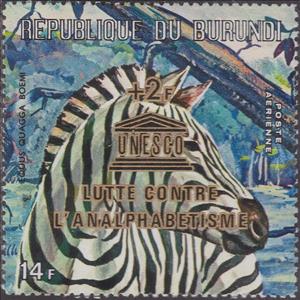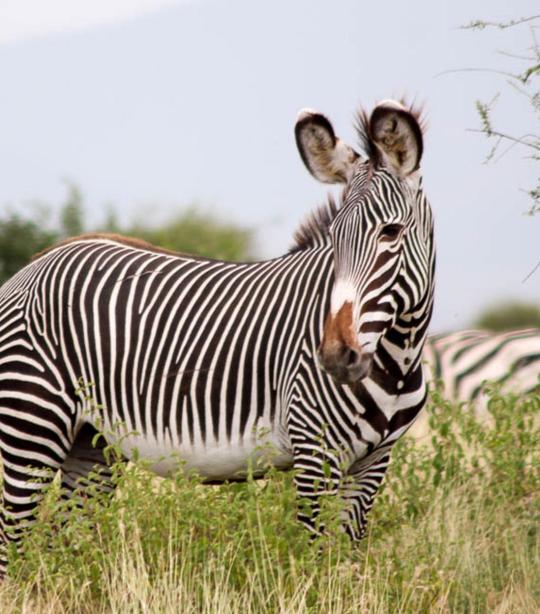Stamp: Plains Zebra (Equus quagga) (Burundi 1971)
Plains Zebra (Equus quagga) (Burundi 1971)
09 August (Burundi ) within release UNESCO campaign against illiteracy goes into circulation Stamp Plains Zebra (Equus quagga) face value 14+2 Burundian franc
| Stamp Plains Zebra (Equus quagga) in catalogues | |
|---|---|
| Michel: | Mi:BI 768 |
Stamp is square format.
Also in the issue UNESCO campaign against illiteracy:
- Stamp - Black Rhinoceros (Diceros bicornis) face value 14+2;
- Stamp - Plains Zebra (Equus quagga) face value 14+2;
- Stamp - Leopard (Panthera pardus) face value 14+2;
- Se-tenant - Animals of the Africane - Surchargerd face value 4*(14+2);
Stamp Plains Zebra (Equus quagga) it reflects the thematic directions:
The United Nations Educational, Scientific and Cultural Organization (UNESCO; pronounced /juːˈnɛskoʊ/) is a specialized agency of the United Nations (UN) with the aim of promoting world peace and security through international cooperation in education, arts, sciences and culture. It has 194 member states and 12 associate members,as well as partners in the non-governmental, intergovernmental and private sector. Headquartered in Paris, France, UNESCO has 53 regional field offices and 199 national commissions
Zebras (US: /ˈziːbrəz/, UK: /ˈzɛbrəz, ˈziː-/) (subgenus Hippotigris) are African equines with distinctive black-and-white striped coats. There are three living species: Grévy's zebra (Equus grevyi), the plains zebra (E. quagga), and the mountain zebra (E. zebra). Zebras share the genus Equus with horses and asses, the three groups being the only living members of the family Equidae. Zebra stripes come in different patterns, unique to each individual. Several theories have been proposed for the function of these patterns, with most evidence supporting them as a deterrent for biting flies. Zebras inhabit eastern and southern Africa and can be found in a variety of habitats such as savannahs, grasslands, woodlands, shrublands, and mountainous areas
Animals are multicellular, eukaryotic organisms of the kingdom Animalia (also called Metazoa). All animals are motile, meaning they can move spontaneously and independently, at some point in their lives. Their body plan eventually becomes fixed as they develop, although some undergo a process of metamorphosis later on in their lives. All animals are heterotrophs: they must ingest other organisms or their products for sustenance.




